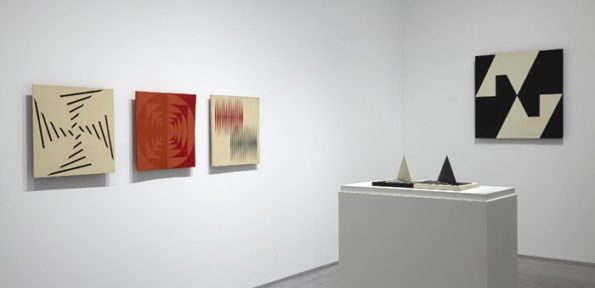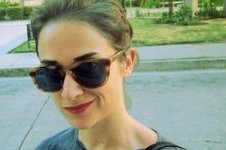Search
To search for an exact match, type the word or phrase you want in quotation marks.
A*DESK has been offering since 2002 contents about criticism and contemporary art. A*DESK has become consolidated thanks to all those who have believed in the project, all those who have followed us, debating, participating and collaborating. Many people have collaborated with A*DESK, and continue to do so. Their efforts, knowledge and belief in the project are what make it grow internationally. At A*DESK we have also generated work for over one hundred professionals in culture, from small collaborations with reviews and classes, to more prolonged and intense collaborations.
At A*DESK we believe in the need for free and universal access to culture and knowledge. We want to carry on being independent, remaining open to more ideas and opinions. If you believe in A*DESK, we need your backing to be able to continue. You can now participate in the project by supporting it. You can choose how much you want to contribute to the project.
You can decide how much you want to bring to the project.

From 23 January to 16 September the Museo Reina Sofía in Madrid is presenting to the public the exhibition La invención concreta, co-produced by the museum and the Patricia Phelps de Cisneros Collection. An opportunity to see, in Madrid, some works representative of the development of abstraction in four Latin American countries in the mid 20th century. The exhibition proposes an introductory vision that follows the development of this line of visual art and leaves the public with certain questions in mind, the answers for which are hard to find within the context of the exhibition.
The exhibition includes already classic works such as Relógio de sol (Lygia Clark, 1960), Estudio 4 and Estudio 5 (Alejandro Otero, 1954), and Metaesquema (Hélio Oiticica, 1958). It’s never pointless to see them again, as undoubtedly, aside from their plastic value they are the traces of how certain sectors of Latin American culture incorporated and transformed the issues raised by the post-war avant-garde in capitals of the Northern hemisphere. But there is a problem with the way they are presented. This in the end leads to a reading of the works that lacks any reflection regarding the surroundings in which they were generated. The exhibition is organised according to five ideas or intentions: universalism, dialogue, illusion, geometry and vibration. It’s true that the works included in each section participate in some way or other in each one of them, but the way it’s proposed in the exhibition space means the association is left a little vague. The visitor is left with the sense of witnessing isolated formal experiments, disassociated from the particular context of each creator. Nothing is further from the case.
Where’s the alarm about the norm being created in Brazil with concrete art? Amongst others, Lygia Clark and Lygia Pape, both represented in the show, signed in 1959 the Manifiesto neoconcreto. Vindicating the importance of non-rational intelligence in creation. They saw it as necessary to establish a distance from the mechanical mind, to go closer to the wisdom of the body. They reform the form integrating the observer actively within them. Where is the impression left by the Argentine, Tomás Maldonado as a reformer of modern design? His work as a theorist on form and materials in Europe probably helps to understand better his venture into geometric painting such as Composición 208 (1960). Where in the Nouvel building are the statements of the Manifiesto No? Written by the group of artists Los disidentes in 1950, it would set the Venezuelan representation in the exhibition within a context, showing it as part of an endeavour to reform the cultural scene of the country.
The best part of the proposal is the way the series Objeto ativo (Willys de Castro, 1961) is installed. In their own room, the objects coexist in a closed space, appealing to the body of the visitor who enters and participates within this relation of diverse voices established between them. The visitor is activated at the same time as the works, announcing a physical communication between them, in a sort of very stimulating, minimal phenomenology.
The Reina Sofía has assumed to perfection its mission to offer the public other stories about modernity in Latin America: for years it has provided evidence that sustains different readings of the history of a particular geographical area. The museum has accustomed the public to looking at complementary material in their rooms, works, publications, texts, videos and diverse documentation that places the work in a specific historic moment and sustains, now yes, the real intentions of the people that invented and produced them. However, in this case, they’ve wanted to substitute this very necessary part of the show with an unsatisfactory application for iPad.

Paloma Checa-Gismero is Assistant Professor at San Diego State University and Candidate to Ph.D. in Art History, Criticism and Theory at the University of California San Diego. A historian of universal and Latin American contemporary art, she studies the encounters between local aesthetics and global standards. Recent academic publications include ‘Realism in the Work of Maria Thereza Alves’, Afterall, autumn/winter 2017, and ‘Global Contemporary Art Tourism: Engaging with Cuban Authenticity Through the Bienal de La Habana’, in Tourism Planning & Development, vol. 15, 3, 2017. Since 2014 Paloma is a member of the editorial collective of FIELD journal.
"A desk is a dangerous place from which to watch the world" (John Le Carré)